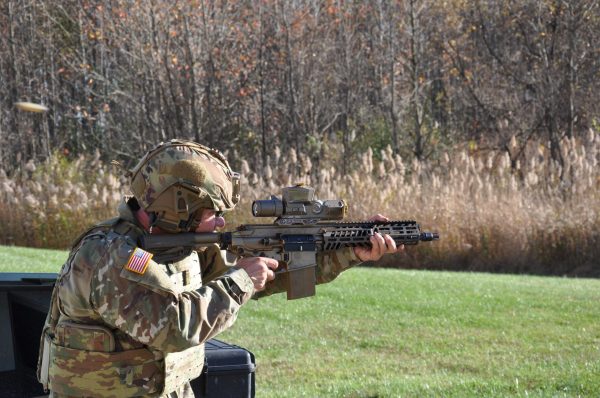This article first appeared on Warrior Maven, a Military Content Group member website.
China, Russia, and the impact of climate change have prompted the Pentagon to revamp its Arctic strategy for the first time since 2019.
The Defense Department released the broad strokes of the plan on Monday. Iris Ferguson, the deputy assistant secretary for Arctic and global resilience, called it action oriented, saying “We unpack where we need to sustain our investments, especially in critical capabilities. What do we have to see? How do we communicate? Do we have the right equipment to operate in the region?”
The Pentagon report calls for investing in Arctic-capable equipment such ground tracking sensors, modernized radars for early warning that are operated by both the US and Canada, and more technology from commercial partners and allies – especially when it comes to military satellites to improve communications.
Deputy Defense Secretary Kathleen Hicks called the Arctic a “perfect domain” to test out new technologies, an indication that drones and artificial intelligence will play a role.
More exercises were urged with NATO allies, along with improved information sharing. Seven of the eight Arctic nations are now members of NATO – Canada, Denmark, Finland, Iceland, Norway, Sweden and the US. The report says the addition of Finland and Sweden following the Russian invasion of Ukraine will create new opportunities for planning but cautions, “an extended Alliance border with Russia in the Arctic increases the need for DoD to manage risk in the region.”
And the report called on the services to ensure that there is adequate equipment for troops to operate in temperatures routinely reaching -50 degrees Fahrenheit or lower.
“The strategic can quickly become tactical, ensuring that our troops have the training, the gear, and the operating procedures for the unique Arctic environment, (which) could be the difference between mission success and failure,” said Hicks. “It is imperative that the joint force is equipped and trained with what they need to operate in the Arctic.”
The Pentagon points out that Russia has the largest Arctic territory and the biggest military presence in the region. The Kola Peninsula is home to Russia’s Northern Fleet and its submarine-launched ballistic missile force. The report warns that Russia “could use its Arctic-based capabilities to threaten the ability of the United States to project power both to Europe and the Indo-Pacific region, constraining our ability to respond to crises.”
The report says that while there are still significant areas of disagreement between Russia and China, the two countries are increasingly collaborating in the Arctic. There have been joint naval exercises in the region the last two years, and Moscow has turned to Beijing to help fund the extraction or oil and natural gas there.
Already have an account? Sign In
Two ways to continue to read this article.
Subscribe
$1.99
every 4 weeks
- Unlimited access to all articles
- Support independent journalism
- Ad-free reading experience
Subscribe Now
Recurring Monthly. Cancel Anytime.
On its own, China has conducted more than a dozen research expeditions in the Arctic and has underwater drones and fixed-wing aircraft. Meanwhile, Beijing’s “Polar Silk Road” initiative has pursued investments in infrastructure and natural resources.
As for climate change, the report says the Arctic is warming three times faster than the rest of the world – and that’s having an impact on infrastructure, much of which was built during the Cold War. Plus, the loss of sea ice is likely to lead to more ship traffic and other activity, which could lead to accidents and environmental degradation.









